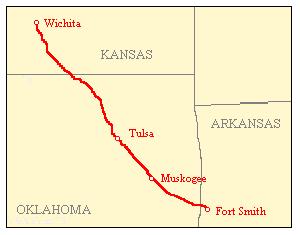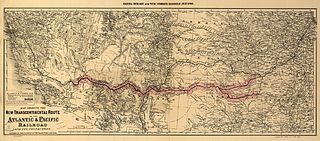
McClain County is a county located in south central Oklahoma. As of the 2020 census, the population was 41,662. Its county seat is Purcell. The county was named for Charles M. McClain, an Oklahoma constitutional convention attendee.

Grady County is a county located in the U.S. state of Oklahoma. As of the 2020 census, the population was 54,795. Its county seat is Chickasha. It was named for Henry W. Grady, an editor of the Atlanta Constitution and southern orator.

Lehigh is a city in Coal County, Oklahoma, United States. Its population was 356 at the 2010 census.

Purcell is a city in and the county seat of McClain County, Oklahoma, United States. As of the 2020 census, the city population was 6,651, a 13% increase from 2010.

Blanchard is a city in McClain and Grady counties in the U.S. state of Oklahoma. The population was 8,879 at the 2020 census, up from 7,670 at the 2010 census. Blanchard is part of a rapidly growing area of northern McClain and Grady counties known as the "Tri-City Area" with Newcastle and Tuttle.

The Midland Valley Railroad (MV) was a railroad company incorporated on June 4, 1903 for the purpose of building a line from Hope, Arkansas, through Muskogee and Tulsa, Oklahoma to Wichita, Kansas. It was backed by C. Jared Ingersoll, a Philadelphia industrialist who owned coal mining properties in Indian Territory. The railroad took its name from Midland, Arkansas, a coal mining town in western Arkansas, which was served by the railroad. The Midland Valley gained access to Fort Smith, Arkansas via trackage rights over the Frisco from Rock Island, Oklahoma.
The Fort Smith and Western Railway was a railroad that operated in the states of Arkansas and Oklahoma.
The Oklahoma City – Ada – Atoka Railway (OCAA) was formed from trackage from Oklahoma City to Atoka via Shawnee, Ada, and Coalgate, Oklahoma. Atoka to Coalgate had been built between 1882 and 1886 as feeder to the old Missouri–Kansas–Texas Railroad (Katy) main line, and Coalgate-Shawnee-Oklahoma City had been constructed by Katy affiliates, and specifically the first 40 miles northwest out of Coalgate having been built by the Texas and Oklahoma Railroad in 1902. The remaining 78 miles into Oklahoma City were built in the 1903-1904 timeframe by that line’s successor, the Missouri, Kansas and Oklahoma Railroad Company. These properties were not included in the 1923 reorganization of the Katy, and were put in the OCAA instead. The OCAA was sold to the Muskogee Company in 1929, becoming one of the Muskogee Roads.

The Atlantic and Pacific Railroad was a U.S. railroad that owned or operated two disjointed segments, one connecting St. Louis, Missouri with Tulsa, Oklahoma, and the other connecting Albuquerque, New Mexico with Needles in Southern California. It was incorporated by the U.S. Congress in 1866 as a transcontinental railroad connecting Springfield, Missouri and Van Buren, Arkansas with California. The central portion was never constructed, and the two halves later became parts of the St. Louis-San Francisco Railway and Atchison, Topeka and Santa Fe Railway systems, now both merged into the BNSF Railway.

The Gulf, Colorado and Santa Fe Railway was a subsidiary of the Atchison, Topeka & Santa Fe Railway. From its starting point in Galveston, Texas, the railroad eventually extended northwestwards across the state to Sweetwater and northwards via Fort Worth to Purcell, Oklahoma.

The Panhandle and Santa Fe Railway (P&SF) was a railroad company that was a subsidiary of the Atchison, Topeka and Santa Fe Railway (AT&SF), operating primarily in the Texas Panhandle.
The Muskogee Company was a holding company based in Philadelphia. It was originally founded in Delaware on February 27, 1923. The company owned several railroads, which shipped oil and coal to western regions of the United States.
The Southwestern Railroad is a Class III railroad operating since 1990, and until 2017 consisted of two unconnected railroad sections in New Mexico, with no shared functions. These and a third section in the Texas panhandle and Oklahoma, now closed, all operated separately. Since January 2017, only the Whitewater Division is operated by Southwestern.

Mountain Top yard or Penobscot yard is a rail yard in Mountain Top, Pennsylvania. It was built by the Lehigh Coal & Navigation Company (LC&N) in response to an 1837 bill authorizing a right of way and was established by 1840, at least as a construction camp for the Ashley Planes, in support of the construction of the Lehigh and Susquehanna Railroad trackage and operations to join the northern Anthracite Coal Region from barge loading docks along the Susquehanna in Pittston, in the Wyoming Valley, with the Lehigh Canal.

Waldeck is a ghost town in Marion County, Kansas, United States. It is currently a ghost town that was located approximately 3.5 miles north of Lehigh next to a railroad. No buildings remain of this former community.
The Clinton and Oklahoma Western Railroad was a railway in southwestern Oklahoma and the Texas Panhandle, with a mainline eventually running from Clinton, Oklahoma to Pampa, Texas, about 139 miles. The predecessor company was incorporated in 1908, and the railroad was merged out of existence in 1948.
The Texas and Oklahoma Railroad (T&O) existed briefly from its incorporation in mid-1902 to its consolidation with another line at the end of 1903. Its main accomplishment was to construct 40 miles of track northwest out of Coalgate, Oklahoma.
The Ada Terminal Railway, an affiliate of the Oklahoma Central Railway, constructed a spur off the Oklahoma Central into Ada, Oklahoma in 1909, with about 1.93 miles of track. Its assets were assigned July 31, 1914 to become part of the Oklahoma Central Railroad.
The Chickasha Terminal Railway (CTR), an affiliate of the Oklahoma Central Railway, constructed track off the Oklahoma Central into Chickasha, Oklahoma in 1910, with about 3.44 miles of rails. Its assets were assigned July 31, 1914 to become part of the Oklahoma Central Railroad.
The Denison and Washita Valley Railway (D&WV) existed from 1886 to 1903. It had disconnected trackage, partially around Denison, Texas, and partially in a coal mining area in what is now Oklahoma with a line running between Atoka and Coalgate.








